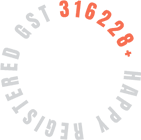
Learn how Composition Scheme in GST is helping small businesses

It is a scheme under GST for small businesses belonging to the unorganized sector with aggregate turnover less than Rs. 1.5 crore (less than 75 lakhs for North Eastern states). The business owners registered under this scheme are called compounding vendors/dealers, and these vendors pay tax at a lesser rate. Also, they have fewer returns to file compared to normal taxpayers.
Here are some important features of composition scheme:
To be eligible, a business must have an annual turnover of less than Rs. 1.5 crore (less than 75 lakhs for North Eastern states) and sell goods only within their own state.
The following individuals cannot opt for Composition Scheme:
When a business owner wishes to apply for composition scheme, they should file the application with the tax department at the beginning of the financial year (1st April). The sign-up process is PAN-based, so business owners are advised to keep their PAN cards ready. The registration process is divided into 3 categories:
For businesses registered under pre-GST regime:
For businesses that are registering for the first time
In this case, the business owner should file FORM GST REG-01. In Part B of the form, under Section 10, select “Registration as composite business owner” option .
For businesses registered under GST
When a business transitions from the normal tax scheme to the composition scheme, it must pay an amount equal to its available input tax credit. The input tax credit will be calculated based on the amount of input materials, semi-finished and finished goods held in stock.
To register for composition scheme, the business owner should file FORM GST CMP-02, and furnish details of ITC related to inputs, semi-finished/finished goods (within 60 days from the beginning of the financial year) held in stock, in FORM GST ITC-3.
Bill of supply: Composition vendors cannot collect tax, therefore cannot claim ITC on the supplies made by them. That’s why a bill of supply is issued instead of a tax invoice. Click to learn more about bill of supply.
Businesses that have registered for the composition scheme will need to file GSTR-4, a quarterly return specifically designed for them. The return for a particular quarter should be filed on or before the 18th of the month following that quarter. Example, if you are filing the GSTR-4 for the July-September quarter, you have to file it before the 18th of October.
In addition to GSTR-4, businesses should also furnish GSTR-9A (consolidated annual return for compounding vendors) as part of the compliance process.
A business owner availing composition scheme can opt out of the scheme, and instead choose the normal tax scheme with benefit of ITC. The credit will be calculated based on input, semi-finished and finished goods held in stock.
Note: You can switch between a normal vendor or compounding vendor only once during a particular financial year.
If tax authorities believe that a business is wrongfully enrolled or not eligible, they may disqualify the business from the composition scheme or demand a penalty equal to the tax amount owed. In case of late filing of GSTR-4, the business owner will be fined Rs. 100 per day to a maximum amount of Rs. 5,000/-. Also, not furnishing returns for 3 consecutive tax periods may result in cancellation of registration by the tax authorities.






